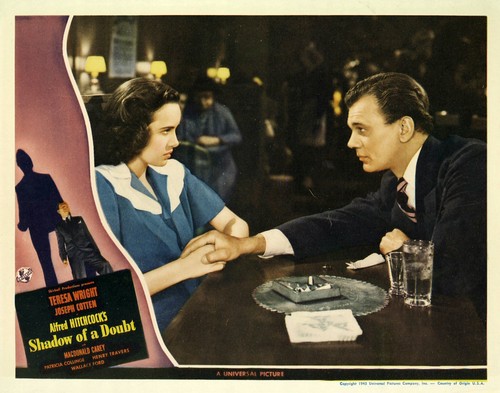
If or when you see "Rope", watch the skyline outside the window of the flat in which the action mostly takes place. Usually he manages it by mingling with a crowd of appearing in advertisements. 35–46.As usual, Hitchcock will put his lucky trade-mark on the film by appearing in it himself. Marshall Deutelbaum and Leland Poague, 2nd ed. “Retrospective.” In A Hitchcock Reader, ed. Chicago: Columbia University Press, 2002. New York: Columbia University Press, 1986. “Sir Alfred Hitchcock.” In A Bibliographical Dictionary of Film. Cambridge: Cambridge University Press, 1993. The Dark Side of Genius: The Life of Alfred Hitchcock. “The Universal Hitchcock.” In A Companion to Alfred Hitchcock, ed. “The Hitchcock Imp: Children and the Hyperreal in Alfred Hitchcock’s The Birds.” In Lost and Othered Children in Contemporary Cinema, ed. Chicago and London: University of Chicago Press, 1992.

Hitchcock on Hitchcock: Selected Writings and Interviews. Cranbury, NJ: Associated University Press, 2002. Dial “M” For Mother: A Freudian Hitchcock. New York and London: Garland Publishing, 1983. American Film Exhibition and an Analysis of the Motion Picture Industry’s Market Structure1963–1980. The Hollywood Family Film: A History, From Shirley Temple to Harry Potter. This process is experimental and the keywords may be updated as the learning algorithm improves.īrown, Noel. These keywords were added by machine and not by the authors. Altogether, this amounts to 13 films, from a total of 54 that Hitchcock directed in his long and illustrious career.

Finally, more abstrusely-but also more significantly in their centrality to the story-we should include the unseen, implied children of Psycho (1960), Frenzy (1972), and, to a lesser extent, Spellbound (1945). To these six films we could add the highly suggestive cameo appearances in The Manxman (1929), Young and Innocent (1937), The Wrong Man (1957), and Marnie (1964). In what sense are children “missing” from Hitchcock’s films? Most obviously, in a purely literal sense, children appear prominently in a mere six Hitchcock films: The Man Who Knew Too Much (1934), Sabotage (1936), Shadow of a Doubt (1943), The Trouble with Harry (1955), The Man Who Knew Too Much (1956), and The Birds (1963). The title of this essay is provocative, seeming in some respects to run against the prevailing themes and inflections of this book.


 0 kommentar(er)
0 kommentar(er)
